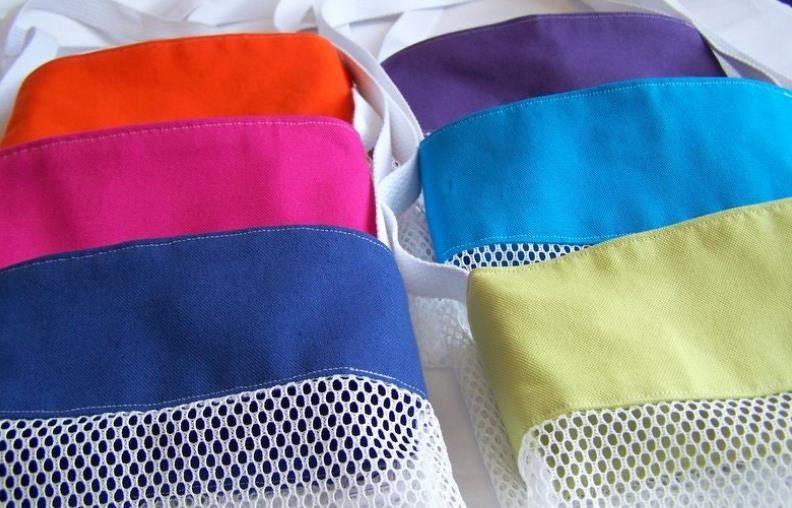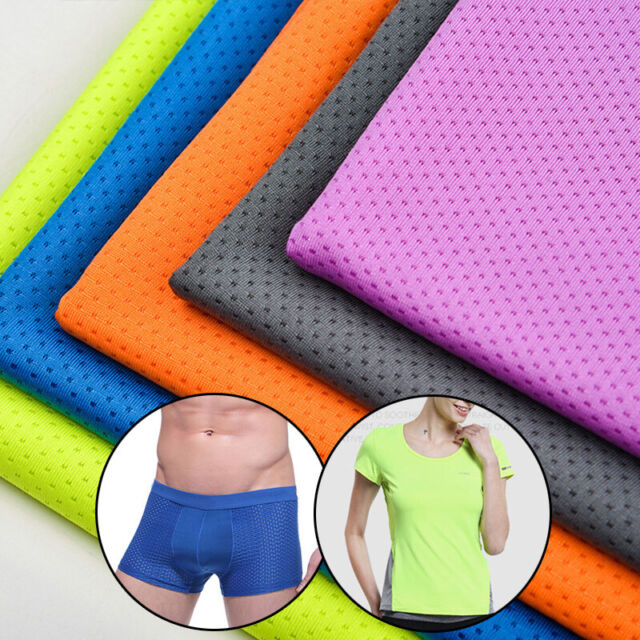Spinning → knitting → cloth inspection → cutting → sewing → ironing → inspection.
(1) Spinning
The purpose of spinning is to wind the incoming cotton yarn into a package of certain structure and specification, which is suitable for knitting production. In the spinning process, it is necessary to eliminate some defects on the yarn, at the same time, make the yarn have a certain uniform tension, and carry out necessary auxiliary treatment on the yarn, such as waxing, oiling, etc., to improve the knitting performance of the yarn, improve the production efficiency and improve the product quality.
(2) Braiding
Weaving is a process in which yarn is woven into coils and interwoven to form fabrics. This is also the fundamental difference between knitted clothing and woven clothing.
The knitting methods can be divided into weft knitting and warp knitting. The fabrics used as knitted clothes are mostly weft knitted fabrics. Weft knitting is to feed one or several yarns into the working needle of the knitting machine from the weft direction, so that the yarns are bent into loops in sequence, and then the weft knitted fabric is formed by stringing. The machine used to knit this kind of knitted fabric is called weft knitting machine. Weft knitting has great adaptability to the variety and linear density of processed yarns, and the varieties of knitted fabrics produced are also very wide. There are many varieties of weft knitted fabrics, which can not only be woven into grey cloth for inner and outer clothing of various organizations, but also can be woven into single piece shaped and partially shaped products. At the same time, the weft knitting process and machine structure are relatively simple, easy to operate, and the production efficiency of the machine is relatively high. Therefore, weft knitting has a large proportion in the knitting industry. There are many types of weft knitting machines, which are generally distinguished by the number of needle beds, the form of needle beds and the types of needles used. Warp knitting is made up of one or several groups of yarns arranged in parallel on the knitting needle respectively, while knitting along the longitudinal direction. The machine used to knit this kind of knitted fabric is called a warp knitting machine. Generally, warp knitted fabrics have less dispersibility and extensibility than weft knitted fabrics. They have better stability in structure and shape, and are also widely used. In addition to producing clothing fabrics, they can also produce mosquito nets, curtains, lace decorative fabrics, medical fabrics, etc. Warp knitting machines can also be distinguished by needle bed and needle type.
(3) Cloth checking
As the quality of grey cloth is directly related to the quality and output of finished products, before cutting, the number of pieces, size, density, batch number and linear density must be checked to see if they meet the requirements according to the cutting cloth ingredient list. During fabric inspection, the grey cloth shall be inspected one by one according to the standards. All kinds of defects that affect the quality of finished products, such as color patterns, missing stitches, holes, oil stains, etc. must be marked and recorded.
(4) Cropping
The main technological process of knitting clothing cutting:
Material breaking → defect borrowing → sample drawing → cutting → binding.
Borrowing defects is an important part of improving product quality and saving materials. In the process of material breaking, the defects on grey cloth shall be borrowed to the cutting or sewing position as much as possible.
Knitted fabrics are cut according to the warp mesh accessories, and the cutting method is generally the over cutting method. The commonly used methods are flat sleeve, mutual sleeve, inlay sleeve, splicing sleeve, slit sleeve, etc.
Pay attention to the following items when cutting knitted fabrics:
(1) Do not use folds and printed edges on obvious parts of clothing.
(2) Do not use the tapered hole mark in the tailoring to avoid affecting the appearance of the garment.
(3) Knitting should have a good shrinkage rate before cutting, and it can be cut 48 hours after the cloth is loosened.
(4) The yarn path of knitting is different from that of woven weaving. Pay attention to the straightness of the yarn path when cutting to prevent the garment from twisting.
(5) Sewing
The existing sewing processes and equipment in China’s knitting industry are mainly medium and high speed flat sewing machines (commonly known as “flat cars”), medium and high speed overlock sewing machines (commonly known as “copying cars”), and stretch sewing machines.
As knitted fabric is composed of coils and sleeves, the edge of the cut garment piece is easy to be detached, so the edge of the garment piece should be sewn first (commonly known as “overlock” or “four thread sewing machine”), and then be sewn with a flat sewing machine. Flat sewing machine and overlock sewing machine are the main machines for sewing knitted fashion. In general, the following points should be grasped during sewing.
1 . Stitch As the fabric of knitted fabric has the characteristics of longitudinal and transverse extensibility (i.e. elasticity) and the defect that the edge loops are easy to be detached, the stitch of knitted fashion should meet the following requirements:
(1) Stitch shall have tensile and strength compatible with knitted fabric.
(2) Stitch shall be able to prevent the fabric loop from falling off.
(3) Properly control the stitch density. For example, the stitch density of the flat bed sewing machine for thick fabrics is controlled at 9-10 stitches/2cm, the stitch density of the overlock sewing machine is 6-7 stitches/2cm, the stitch density of the flat bed sewing machine for thin fabrics is controlled at 10-11 stitches/2cm, and the stitch density of the overlock sewing machine is 7-8 stitches/2cm.
2 . The sewing thread is generally made of 9.8tex pure cotton knitted fabric × 4 or 7.4tex × 3% pure cotton and polyester cotton blended yarn, chemical fiber knitted fabric adopts 7.8tex × 2% elastic nylon yarn and 5tex × 6. The suture shall meet the following quality requirements:
(1) Pure cotton thread (sewing thread) for sewing machine shall be combed cotton thread with high strength and uniformity.
(2) The sewing thread shall have a certain elasticity to prevent thread breakage due to twisting or squeezing of the thread during sewing.
(3) The suture must be soft.
(4) The suture must be even and smooth, so as to reduce the resistance or friction of the suture in the slot and pinhole, and avoid such defects as thread breakage and uneven stitch tension.
3 . Needles Sewing machine needles are also called sewing needles and machine needles. In order to achieve the ideal fit between the needle and the sewing material, the appropriate needle must be selected.
(6) Ironing
Knitted clothing shall be ironed to make its appearance flat and size accurate. When ironing, insert the lining board into the garment to keep the product in a certain shape and specification. The size of the lining board is slightly larger than that required by the garment to prevent the size from being too small after retraction. The ironing temperature is generally controlled between 180 ℃ and 200 ℃, which is safe and not easy to be yellowed and burnt.
(7) Finished product inspection
The finished product inspection is a comprehensive inspection before the product leaves the factory, including two major items of appearance quality and internal quality. The appearance inspection includes dimensional tolerance, appearance defects, seam fastness, etc. The internal testing items include weight per unit area, color fastness, shrinkage rate, etc.
(8) Ready to wear inspection
First, the size. Generally, the shrinkage of darker colors is larger.
Check whether there are pinholes or broken yarn at the opening position.




